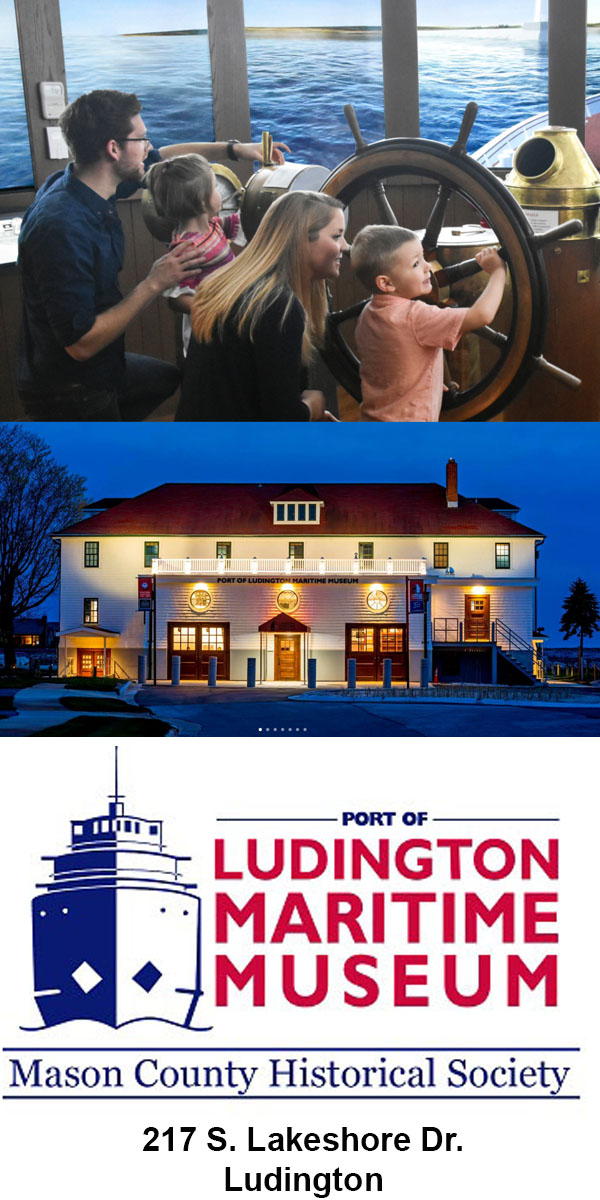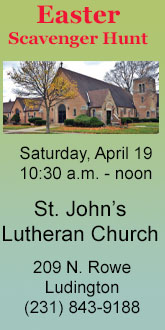 Trekking the NCT: Follow the Blue Blazes to 1850
Trekking the NCT: Follow the Blue Blazes to 1850
By Joan Young, MCP Contributing Writer.
On Dec. 1, 2021 Amber Township resident Joan Young began her journey to hike the entire North Country Trail continuously. She began her year-long trek at the Manistee National Forest’s Timber Creek Campground on US 10 in Lake County. The first half of the hike will take her to Middlebury, Vermont. She will then drive to Sakakawea State Park in central North Dakota to begin the hike back to Michigan. Young, 73, was the first woman to completely hike the NCT, completing 20 years of segmented hikes in 2010.
The North Country Trail is marked by bright blue blazes, and they are certainly a welcome sight when hiking, providing confidence that I am on the correct path.
However, I’ve now crossed into Ohio where the North Country Trail is concurrent for over 800 miles with the Buckeye Trail. Buckeye Trail blazes are also blue, but in a lighter shade. The Buckeye Trail Association’s motto actually is “Follow the Blue Blazes.”
 I’m so encouraged to discover that there are adequate blazes to follow in most places I’ve been in Ohio so far. Twenty-five years ago, on my first hike through this area, there was a noticeable lack of blazing. You could not possibly follow the trail without an official map. Now there are blazes, the paper maps, and an electronic app by Far Out, to help guide a hiker.
I’m so encouraged to discover that there are adequate blazes to follow in most places I’ve been in Ohio so far. Twenty-five years ago, on my first hike through this area, there was a noticeable lack of blazing. You could not possibly follow the trail without an official map. Now there are blazes, the paper maps, and an electronic app by Far Out, to help guide a hiker.
There is also lots more off-road trail than there was all those years ago. This is a delight! On the west side of Ohio, the “new” trail is primarily a very old trail, the towpath of the Miami-Erie Canal. This canal stretched 274 miles from Cincinnati and the Ohio River to Toledo and Lake Erie. After the huge success of the Erie Canal in New York, building canals and their required locks to lift and lower boats became big business in the 19th century. Canals were the state-of-the-art means of transportation and shipping for nearly 100 years.
Western Ohio is a great place to glimpse what canal life would have been like. There are several places where a living history ride can be taken on a reconstructed boat, in a restored canal section, drawn by mules or horses. There are surviving locks; one at Grand Rapids, Ohio, is in working condition and a ride there (open in summer) will put the boat through the lock with passengers aboard.
It’s hard for us to imagine, in our world of private transportation, the importance of the canals in that era. Travel by horse and buggy was difficult, often through thick woods where dangers lurked. The Erie Canal shortened the travel time from New York City to Buffalo from four weeks to nine days!
There were freight boats, hybrid boats, and passenger-only boats called packets. Canals, like airlines, offered first class accommodations. Elite packets stopped each night for passengers to stay at inns. If speed was your thing, you could take an “express.” You slept on the boat and traveled the entire length of the canal in only 80 hours, an amazing time given that there were 103 locks to go through! Standard fare was a nickel a passenger mile, which means that passage from Cincinnati to Toledo cost $13.70 per person. How much extra for one of the special services?
 I love learning about the stories associated with the canal. As I walk the trail, once the towpath, I think about the boys leading the mules. The canal is in some places only a muddy ditch now, and in some places a beautiful back-yard water feature. I ponder the towns, those still viable and those lost in the mud of floods and time, who served the canal passengers and moved grain, stone, construction materials, and even the parts to build the railroads that became the death blow for the canals.
I love learning about the stories associated with the canal. As I walk the trail, once the towpath, I think about the boys leading the mules. The canal is in some places only a muddy ditch now, and in some places a beautiful back-yard water feature. I ponder the towns, those still viable and those lost in the mud of floods and time, who served the canal passengers and moved grain, stone, construction materials, and even the parts to build the railroads that became the death blow for the canals.
People in the 1800s might have been relocating to a completely new home in the “west.” They might have been traveling back east to visit relatives. Did they squirrel away pennies for a whole year to save enough money for the fare? As I walk through now-quiet countryside beside huge agricultural complexes, I think of the braying of mules, the shouted commands of the captains, laughter of children, and perhaps the strains of someone singing from the deck. Although the familiar song, “The Erie Canal,” was written almost at the end of the canal era, there were many other songs of the time period.
Towns sprang up at nearly every lock, breaking the monotony and providing a rest stop every hour or so.
As I hike, I also try to take a brief rest at that same frequency. Part of the vision of the North Country Trail is to showcase cultural and historic features. Western Ohio does that so very well! I am approaching 500 miles hiked. So far, so good.

Joan Young stands near a NCT sign on Five Mile Road in Lake County.
Please consider helping to fund local news. Mason County Press and Oceana County Press are available for free thanks to the generous support of our advertisers and individuals who support our service. Click on the PayPal donation button located on the top right of our website.
This story is copyrighted © 2021, all rights reserved by Joan Young, Scottville, MI 49454. No portion of this story or images may be reproduced in any way, including print or broadcast, without expressed written consent.
As the services of Media Group 31, LLC are news services, the information posted within the sites are archivable for public record and historical posterity. For this reason it is the policy and practice of this company to not delete postings. It is the editor’s discretion to update or edit a story when/if new information becomes available. This may be done by editing the posted story or posting a new “follow-up” story. Media Group 31, LLC or any of its agents have the right to make any changes to this policy. Refer to Use Policy for more information.











































.png)




















